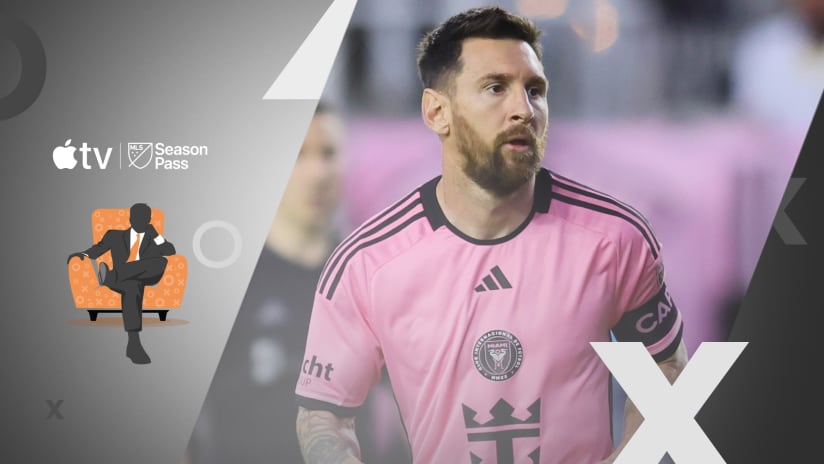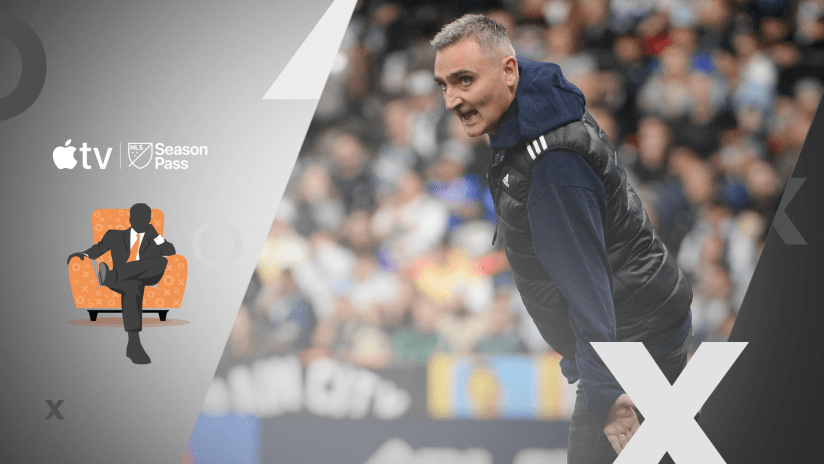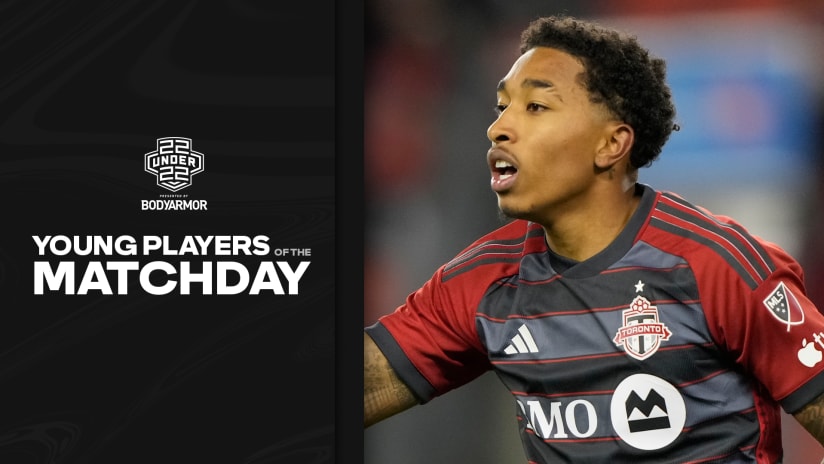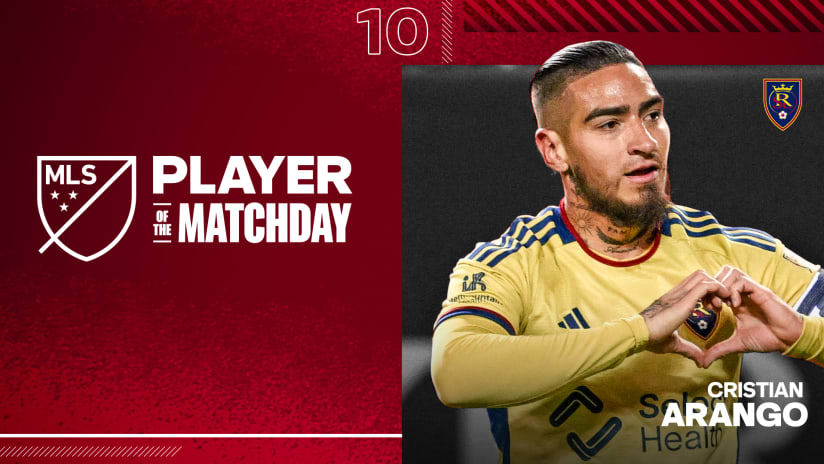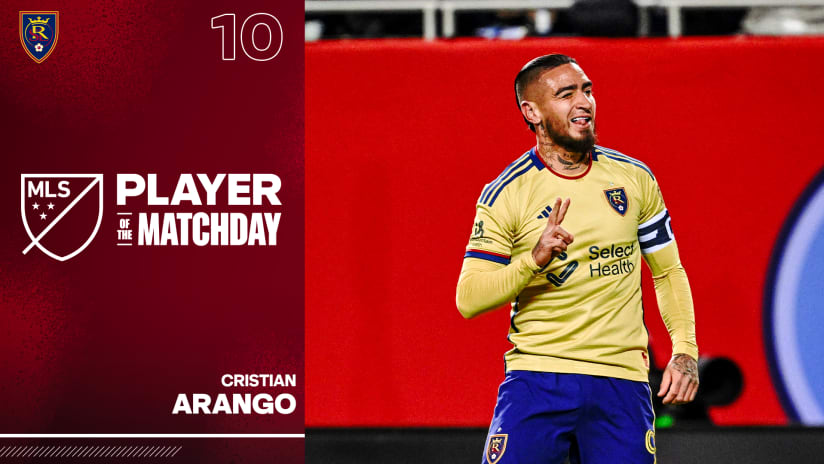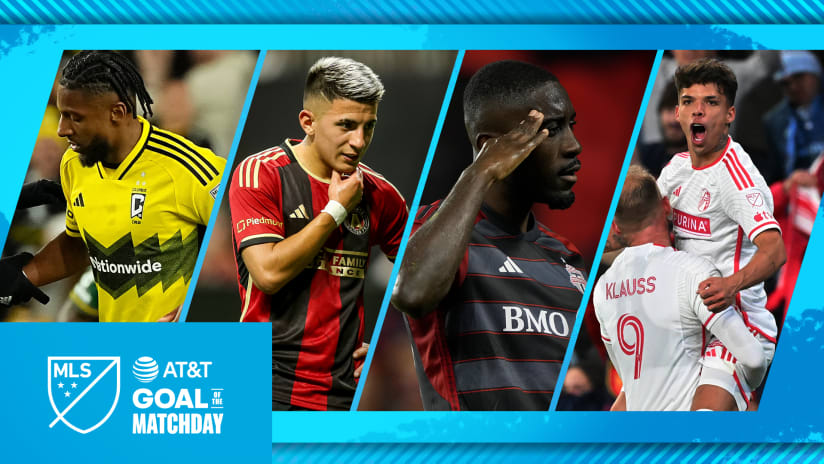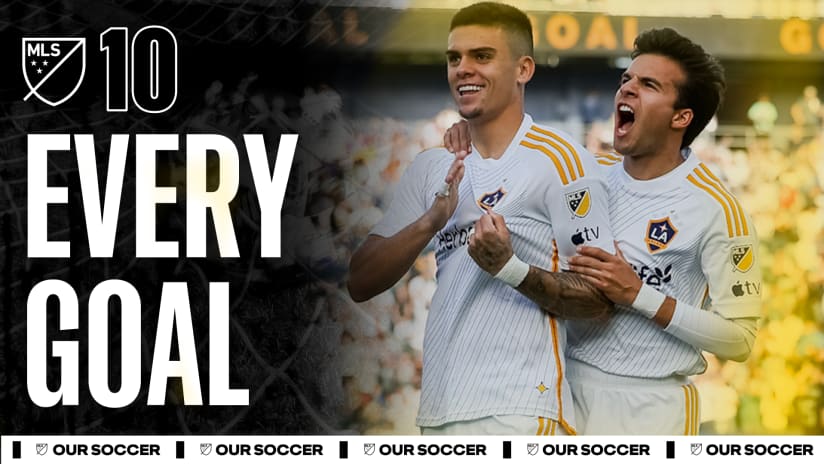Why does the SuperDraft matter? Because it’s a free way to get talent, and over the years we’ve seen 1) that talent, if given room to breathe and if properly coached up, can compete at the highest levels of this league, and 2) we’re still not at a point — and because of the geographic and demographic realities of North America, will probably never be at a point — where pro teams are efficiently hoovering up all the top talent directly into their programs.
There will be kids who grow up nowhere near a development academy, or kids who grow into their bodies a little later in life, or kids who find the right mentality later in life, or kids who just really want to go to college, or kids who just fall through the cracks. Even if MLS expands to 40 teams and USL to 100, those kids will always exist, and my belief that good coaching can mold them into good players will thus always exist as well.
So, in turn, the draft’s always going to exist, and there’s always going to be good players to find and develop via that mechanism. If you’re committed to that, like Gregg Berhalter and Bob Bradley (to name two) seem to be, you’re going to find players who can get you points. Occasionally you’ll be able to find a Jack Harrison or Cyle Larin, a player you can sell on for millions of dollars. Now you’ve gotten points and money — which is, I’d imagine, a lovely thing to show to ownership the next time you’re negotiating a contract.
The difference between now and five years ago is that if you crush it with other player acquisitions mechanisms, you probably don’t need to draft players who can win you points. Got a booming academy, locked-in USL team and an owner willing to splash on imported talent? There’s mounting evidence you can ignore the draft pretty comfortably and compete at or near the top of the league.
But even in the TAM era, even after just two weeks there’s Joao Moutinho, Tristan Blackmon, Ken Krolicki, Brandon Bye, Chris Mueller, Mason Toye, Luis ArgudoNiki Jackson… that’s a good haul. And then there are players from last year’s relatively shallow draft like Lalas Abubakar, Jake Nerwinski and Jacori Hayes who’ve made obvious year-over-year improvement, and then there are other guys who will tear it up in USL for a year or two before pushing their way into the full MLS team.
That’s not going to be the story after the first two weeks of MLS. The story is going to be — justifiably — “we’re in a new era of young goalscorers coming from Latin America and the academies.” But it’s a story, and one you should be aware of if you want to understand and appreciate the full scope of the way the league’s been developing.
How the Turntables
Sporting KC, in the midst of some lineup flux, went on the road and got three points. Normally that’s an unvarnished good thing, but I’m choosing to be at least a little bit worried about what we’ve seen out of SKC after two weeks.
In their first outing they lost 2-0 at home to an admittedly very good NYCFC side. In their second they took a 2-0 lead at Chicago, then in very un-Sporting-like fashion, coughed it up and went down 3-2. Then in arguably even more un-Sporting-like fashion they grabbed two late goals via some clinical finishing to take a high-scoring, open and dramatic 4-3 road win at the death.
When is the last time you were able to use the words “seven-goal thriller!” to describe an SKC game? Been a while.
Even though they were on the right end of the scoreline this is pretty shocking to me, and more than a touch worrying how vulnerable they’ve looked on the defensive side:
This is an expected goals map provided by Opta. The larger the circle, the better the chance. Yellow circles are goals.
You can see the total xG they allowed at the top of Ben’s graphic, and 3.48 conceded is a monstrous number. Columbus barely got over three even with a penalty, and RBNY got their four goals on 2.72 xG. Only LAFC (4.9) topped Chicago's number on Saturday.
Look again at that shot map, and focus on where Chicago’s shots came from. Through two games Sporting have allowed five goals. In 34 games last year, they allowed 29. Through two games Sporting have allowed six shots from inside the six-yard box. in 34 games last year, they allowed… 17.
It pretty much doesn’t matter how well Tim Melia plays (or doesn’t); if you’re giving up three shots per game inside the six, you’re roasted even if you've got prime Lev Yashin.
The Fire were able to able to simply drive play right down Sporting’s throat in a way that teams basically haven’t been able to do for almost a decade. In the second half they switched from their typical 4-2-3-1 to a 4-4-2, and then banged cross after cross to the back post. If Aleksandar Katai hadn’t stopped helping out defensively after Chicago took a 3-2 lead — or if Veljko Paunovic had made a sub three minutes earlier — the hosts probably see out the win.
Here's the scary part about that: In the past, if you switched to a 4-4-2 against Sporting you were dead. They'd just swarm the hell out of you in central midfield, dominate the ball, dominate possession and strangle the game. That didn't happen on Saturday as Chicago took over 60 percent possession in the second half. SKC's defensive issues started up top, grew larger in midfield and became almost fatal on the backline.
Peter Vermes has some work to do, and he knows it. He also knows those three points matter more than my nattering.
“I do for sure have to go back and look at the goals that came against us. I have a pretty good idea in my head and I'm not very happy with them but like I said, what's really easy, especially away from home, you can put your head in the sand and be done. We didn't do that. And the fact that we got the tying goal and then the winning goal really showed a lot of heart within the group."
It did. He’s not wrong, and Daniel Salloi in particular deserves some freaking dap. But he’s not going to play like that every week, and they’re not going to finish like that every week. And that means SKC can’t defend like that every week.
They’re not in trouble yet, but if they keep playing like they've done through two weeks, they’re pointed at it.
Why Are You The Way That You Are
It’s supposed to be hard to be an expansion team. It’s supposed to be hard to go on the road in MLS. It’s supposed to be especially hard to do so against conference foes, and let’s just add the obvious that it’s supposed to be even harder than that against conference foes who are/were supposed to be good. Seattle made it out of the West and into MLS Cup last year, right? And RSL were the West’s best team in the second half of last season, ok?
Add in the unique-to-MLS experience of going from turf in a rainstorm to the 4,400 foot altitude of the high desert in winter, and you arguably couldn’t have drawn up a more daunting “welcome to the league” experience than what LAFC have had over the last two weeks. So naturally they went smash-and-grab in Week 1, then put on an absolute clinic in Week 2. They destroyed RSL by 5-1 at Rio Tinto, and it honestly wasn’t that close.
This game was an avalanche of black-and-gold breakaways with Diego Rossi and Carlos Vela and the ever-underappreciated Marcos Ureña ripping the hosts apart. My colleague Bobby Warshaw broke down the simple principle guiding LAFC’s approach:
As with everything about this game of ours, there’s more than what’s happening on the ball. Bobby points out the direct runs from the wingers, which ripped up RSL’s fullbacks. There were also direct runs from central midfield – notice how Damir Kreilach doesn’t track Benny Feilhaber on that second goal from Bobby’s vid? Never did the fundamental work of checking his shoulder to get a sense of the danger. Add in a sloppy performance from Kyle Beckerman, and that's how you ship five.
The simplicity and decisiveness of LAFC's front six (shout-outs to Latif Blessing and Mark-Anthony Kaye, who's been a revelation) has allowed the back four to play relatively uncomplicated soccer through the first two weeks, and to spend most of their time out there defending a lead rather than chasing the game. Steven Beitashour got two assists this weekend, but for the most part didn't get that high; Moutinho was asked to support the attack rather than overlap and generate it; the center backs, who can't really run, were exposed in transition only once. You can see how much higher on the field Moutinho got than Beitashour by checking out their heat maps below.
It feels like this whole thing has been planned out and scripted, down to the touch. Now Bob Bradley's got three weeks off to do some fine-tuning, maybe add another DP, and see if he can build upon the most impressive start any expansion team's ever had in MLS history.
A few more things to ponder...
7. Adrian Heath finally got his Orlando homecoming, and it was a very happy one, the least he deserves given what he meant to that franchise during their USL days and then taking them into MLS. Minnesota United won 2-1 behind a pair of goals from Ethan Finlay and Toye made a sterling debut.
Orlando City were shorthanded again, but it's nonetheless not good enough. Their backline was disorganized, they defend way too narrow and they've already dropped five points.
6. Our Pass of the Week comes fromFidel Escobar in RBNY's 4-0 disintegration of Portland. Bobby and I broke it down:
Here's what happens when you combine the @NewYorkRedBulls high press with slick, one-touch play. https://t.co/Hjx57WJFMx
— Major League Soccer (@MLS) March 11, 2018
This is called a third-line pass – a pass that splits defenders and cuts them out of the play – and if I were a video analyst with a tracking system I would absolutely, positively be collecting third-line pass data. My hunch is that RBNY play both more and a higher percentage than any other team.
Was it the best pass of the weekend? No. But it was the most emblematic of how a given team plays.
By the way, notice Liam Ridgewell jogging behind the play after Derrick Etienne's backheel? Timbers fans did.
5. Kei 100! In the 28th minute ofVancouver's (probably significant) 2-1 win at Houston, the well-traveled Kei Kamara got the 100th goal of his regular season MLS career, converting a penalty he himself drew. He's now scored for six teams, but at age 33 it looks like he's finally home. Dude's simply built for how the 'Caps play – tons of long balls, a predilection for crosses, and not much emphasis on possession at all. The default setting is "get the center forward into isolation on a single CB" and so he's rewarded them with two goals in two games.
There was nothing shocking or unexpected about how the 'Caps played in this one. It's always shocking, however, to see Houston drop points at home.
My initial impression of the game last night was that the Dynamo had lacked ideas in the attack, but upon a second viewing this morning I have to take that back. They did their usual "get out into space on the flank and use overwhelming speed" thing, but there was also a hefty serving of playing right up the gut. If Mauro Manotas could head the ball even a little bit, Houston probably take three points.
They do need, however, to find some reinforcements along the backline.
4. Columbus got up big, took their foot off the gas and nearly paid for it in an eventual 3-2 win over visiting Montreal. Gyasi Zardes got two more goals and through 180 minutes has looked like one of the league's better center forwards.
The Impact are, as of now, a very week defensive team. But they're fun as hell in attack and are showing signs of life in midfield. Expect them to grow into the season.
3. Jackson scored a goal in his debut but Colorado lost 2-1 to the Revs after a deflected Chris Tierney free kick buzzed by a strangely rooted Tim Howard in second-half stoppage. The Rapids played 98 long-balls, which is about 20% higher than any other team in the league. They clearly need a dose of on-the-ball creativity in midfield.
As for the hosts, New England attempted 19 open play crosses – a huge number. They connected on two of them, which is not a huge number.
These two teams, for the time being, lack ideas.
2. Atlanta United started looking a little bit more like last year's Atlanta United in their 3-1 win over visiting D.C. on Sunday. Turns out it helps to have Jeff Larentowicz in there at d-mid rather than miscast as a center back.
United, on the other hand, lacked structure, cohesion and clarity. They didn't seem to know how to cover for each other, especially when the fullbacks pushed up:
Armchair Analyst: Nobody loves running lanes the way Atlanta United loves running lanes. DC played themselves. pic.twitter.com/PkHhrnoi5d
— Matthew Doyle (@MattDoyle76) March 11, 2018
Atlanta's 3-5-2 was interesting, by the way. But it definitely didn't look as fluid as what they were trotting out a year ago at this time.
1. And finally, our Face of the Week goes to Galaxy 'keeper David Bingham, whose team lost 2-1 at NYCFC:
I honestly thought that LA were going to get blown out, but they may have been saved by an otherwise unfortunate injury. Gio dos Santos popped his hamstring in the first half, and so at halftime he was subbed out for defensive midfielder Servando Carrasco, switching the shape from a 4-2-3-1 to more of a 4-3-3, with the wingers higher and Jonathan dos Santos – whose turnover led to the first NYCFC goal, and who didn't track on the second – into more of a playmaker's role.
It worked. LA were more solid in defense, better in possession and more dangerous going forward in the second half (with JDS getting the goal). NYCFC still fully deserved the three points, but at least it was a contest. In the first 45, it wasn't.
Whether or not Gio maintains his place as a starter whenever he returns from injury is something worth keeping an eye on.


